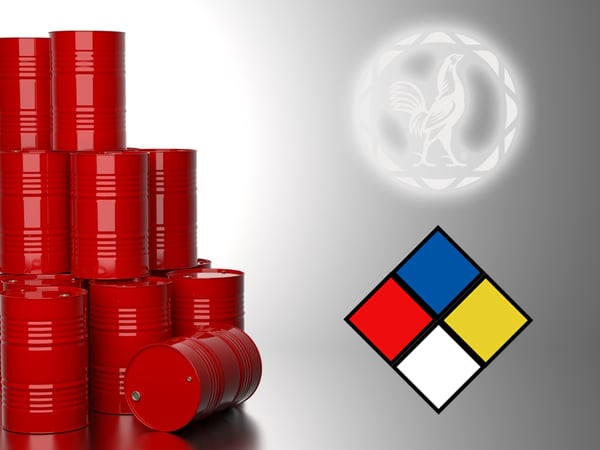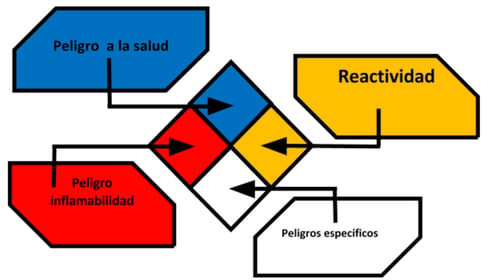
In the industry and laboratories where human consumption products are processed, a wide variety of chemical substances are handled. Due to their reactive nature, each of these chemicals has to be handled with extreme precautions and respect.
The specific management of these substances in Casa Sauza, as well as the information on how to handle chemicals, is provided by our "Health, Safety, and Ecology" staff. The information they provide is based in the official regulations, which provide the required information regarding chemical susbstance handling.
At Casa Sauza's laboratory, we have several chemical agents of dangerous properties which may cause a fire, explosions and/or health risks, such as intoxications and burns. To be able to manage these chemical substances, we make use of a "keep-track" chain, which allows us to trace a plan with all the required information in order to reduce the probability of an accident to happen and keep accident's consequences at minimum levels.
First, we start with the arrival of the chemical agent to our company, we need to ask for the safety approval document, and that's the only way the substance can get in our plant. Not all the chemical substances are considered dangerous, but we need the safety approval document for all the products.
The safety approval letter must contain and meet all the required aspects of the official regulation standards. We first have to check that it includes the following aspects:

Risk Levels Classification
Risk Level 4: Highly Dangerous
Health risks:
- When being exposed more than once, it may cause permanent damage.
Flammability risks:
- Sustancias que se vaporizan rápida o completamente a presión atmosférica ya temperatura.
- Ambiente normal o que se dispersan fácilmente en el aire y queman fácilmente.
Nivel 4 de riesgo de reactividad
- Substances that vaporize quickly or totally when they are exposed to atmospheric pressure and room temperature.
- Normal environment or that they may easily burn and disperse in the air.
Reactivity risks:
- They are easily able to detonate or have an explosive reaction to high temperatures and normal pressure.Specific risks:
Specific risks:
- OXY Oxidant.
Risk Level 3: Seriously Dangerous
Health risks:
- Any injury will be probably just to attract attention from the doctor. Any effect in the skin or the cornea is totally reversible.
Flammability risks:
- Liquids and solids can be burned in almost every environmental condition.
Reactivity risks:
- Substances that by themselves are able to detonate or discompose with reaction explosives, but they require a heating source.
Specific risks:
- ACID Ácido
- ALK Alcali
Risk Level 2: Moderately Dangerous
Health risks:
- They may cause minor temporary injuries. Moderate irritations are reversible in 7 days.
Flammability risks:
- Substances that must be pre-heated moderately or exposed to specific temperatures.
- Environment, before the ignition is produced. These risk level substances do not create dangerous atmospheres within the air.
Reactivity risks:
- Chemical substances that can easily experience a chemical change due to high temperatures and high pressure.
Specific risks:
- COR Corrosiveness
- W Do not use water
- Radiation
Risk Level 1: Lightly Dangerous
Health risks:
- Irritation or possible reversible injury. Lightly irritating, reversible in 7 days.
Flammability risks:
- Substances that must be preheated before ignition.
- They require a pre-heating process under any temperature, environment, ignition or combustion.
Reactivity risks:
- Substances that by themselves, they are normally stable, but can turn unstable under certain temperatures and pressures.
Risk Level 0: Minimal Danger
Health risks:
- They do not represent any health risk.
Flammability risks:
- Substances that don't burn, this included any material that doesn't burn with the contact of air.
Reactivity risks:
- Substances that by themselves are normally stable even in heating conditions.
.png?width=50&height=50&name=10.CS-Redondo%20(1).png)
